9 Care Tips for Handknit Socks
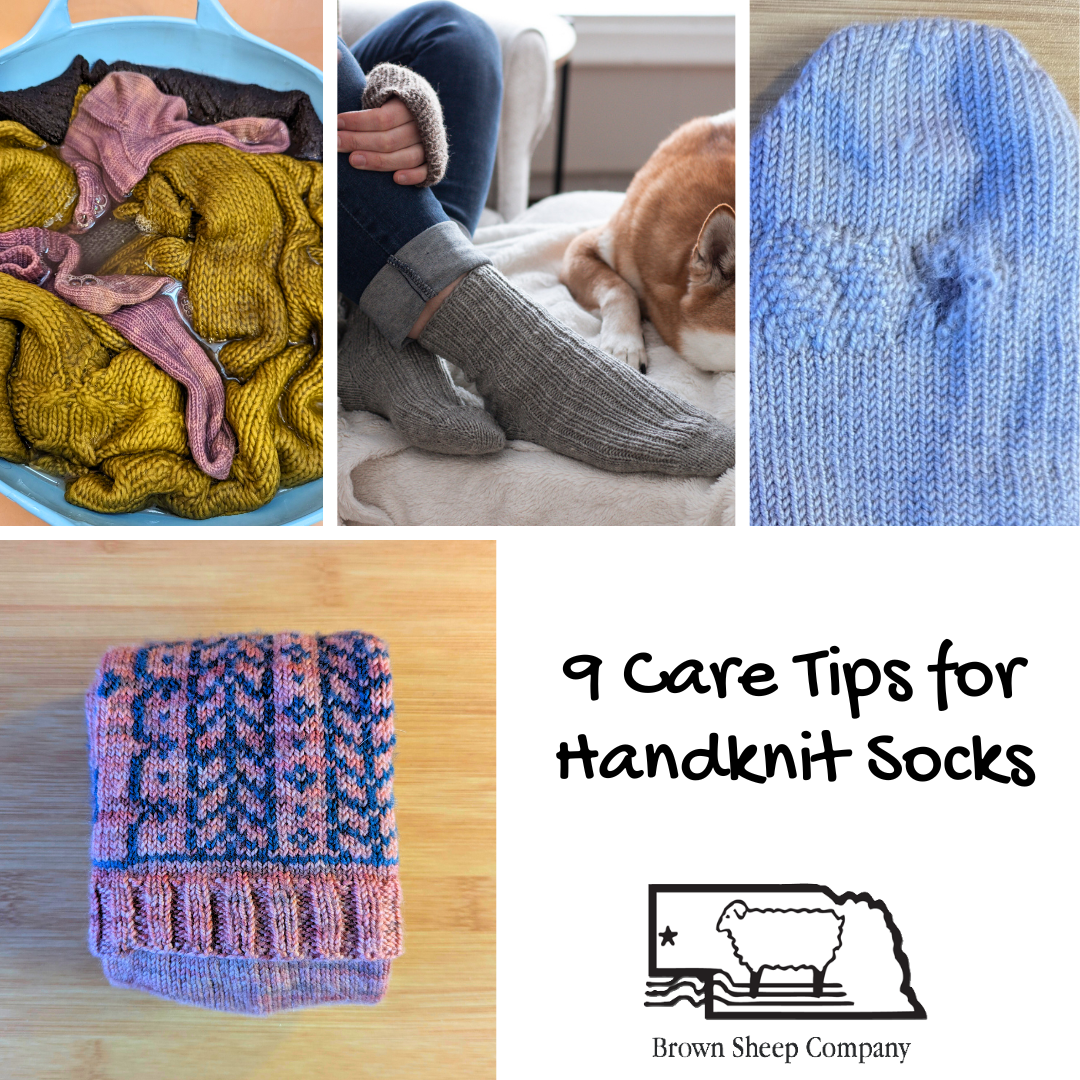
Happy Socktober! Brown Sheep is back for every knitter’s favorite sock knitting month of the year with our top 9 care tips for handknit socks.
We’re honored that so many Brown Sheep yarns have been used for sock patterns over the years. From bulky yarns like Burly Spun and Lamb’s Pride Bulky for woolly slipper socks to colorful colorwork socks in Nature Spun and Prairie Spun DK to your everyday workhorse socks in Wildfoote, knitters love our yarns for socks. Our focus on natural fibers—wool and wool blends—means knitters can craft beautifully warm, hardwearing socks that boast all the benefits of wool. Wool is antibacterial, moisture wicking, and temperature regulating. Nothing beats a handknit wool sock!
Keep reading to learn our top care tips for preserving your handknit socks so that they last a lifetime. Caring for handknit socks is similar to caring for handknits, and very different from caring for store bought socks.
Interested in diving deeper into our sock knitting resources for socktober? Check out 7 Free Patterns for Socktober, 10 Tips for Knitting Socks, and 7 Sock Patterns to Celebrate Socktober!
1. Wash in Cold Water Only
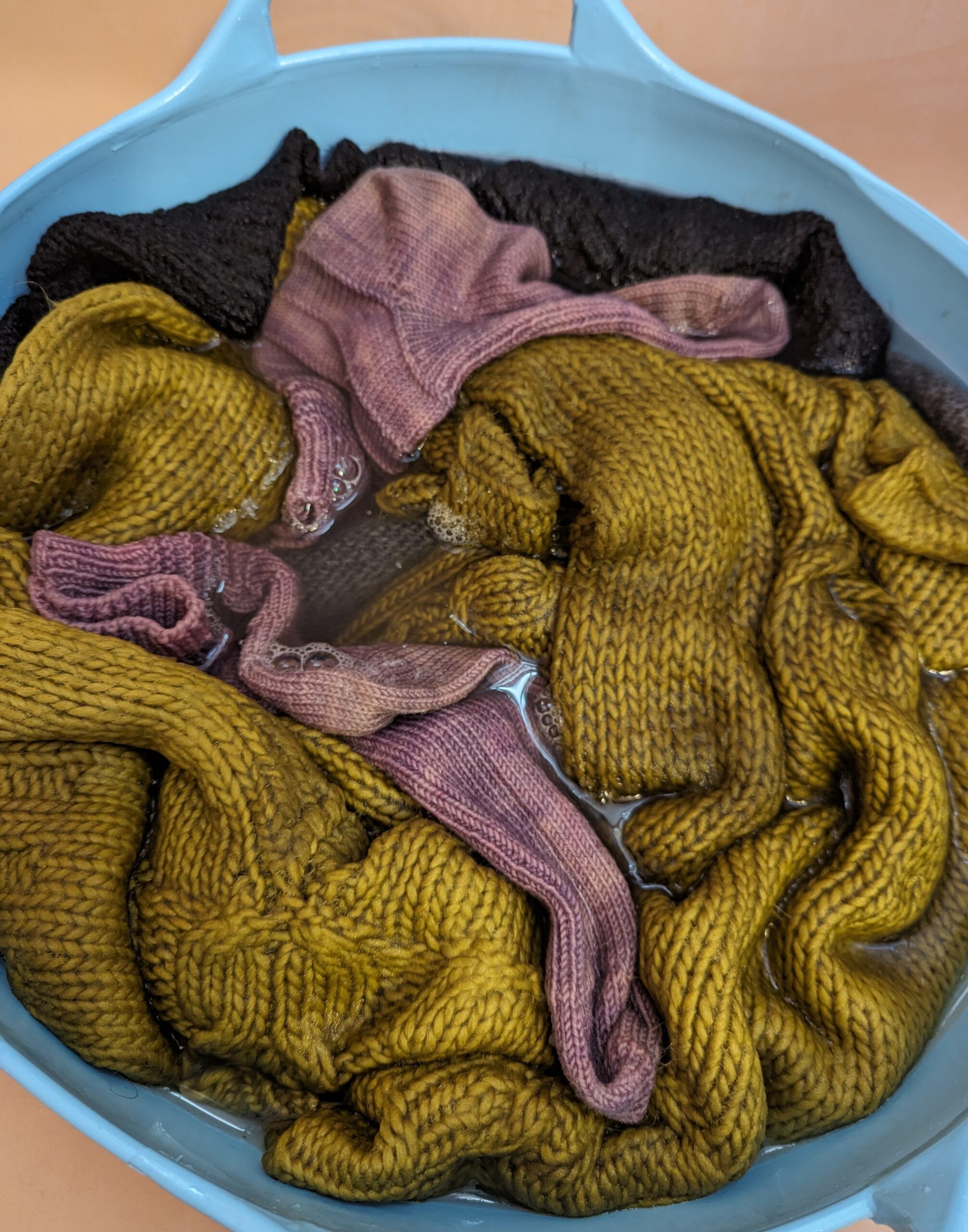
Many sock yarns are composed of superwash wool, so technically, you can throw them in your washing machine. We recommend only using cold water and a gentle cycle if you choose to machine wash your socks. A yarn like Wildfoote can be washed in the machine on a cold, gentle cycle, for instance.
However, to make your socks last even longer, we recommend hand washing in a stopped sink or small bowl with cold water. This will reduce the agitation your sock would undergo in a washing machine and contribute to the longevity of your sock. Hand washing is recommended for pure, untreated wools like Lamb’s Pride and Nature Spun, to prevent felting and shrinkage.
2. Use a Gentle Detergent
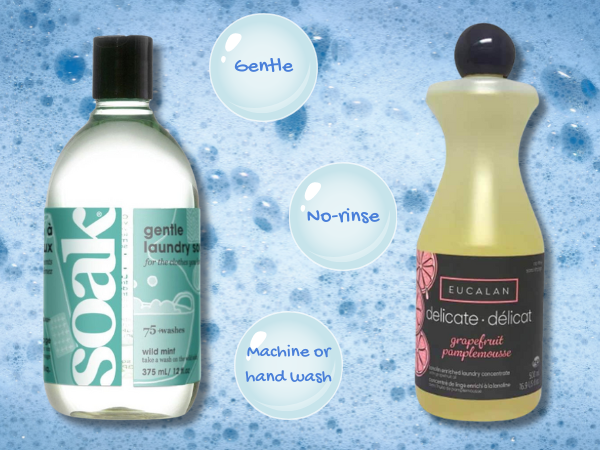
When washing socks, opt for a gentle detergent. Brands like Soak and Eucalan were developed with delicate materials and handknits in mind. Both are gentle, can be used for machine or hand washing, and don’t require a secondary rinsing. They don’t have abrasive chemicals and may also contain conditioning agents like lanolin. In a pinch, a gentle dish soap like Dawn can also work if you’re hand washing your socks.
3. Skip the Dryer
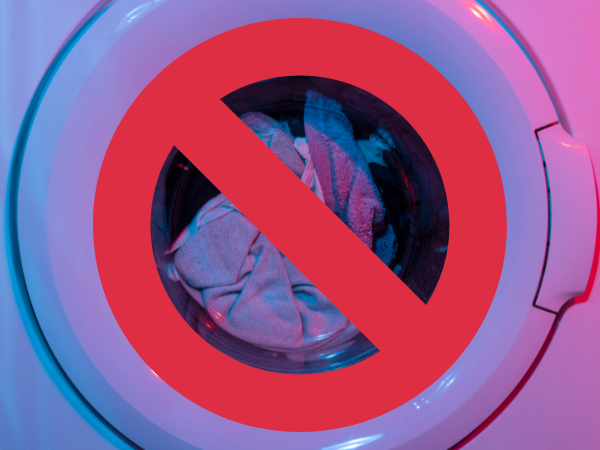
Even with superwash wools, we recommend avoiding the dryer. The heat and agitation of a dryer can add unnecessary wear and tear to socks, which are already a high-wear item. Anytime you can reduce the processes that wear on your socks, you should!
To dry your handknit socks, lay them flat in a towel and roll the towel to squeeze out excess water. Then, either lay them flat on a towel or hang them on a line to dry.
4. Don’t Wash Too Often
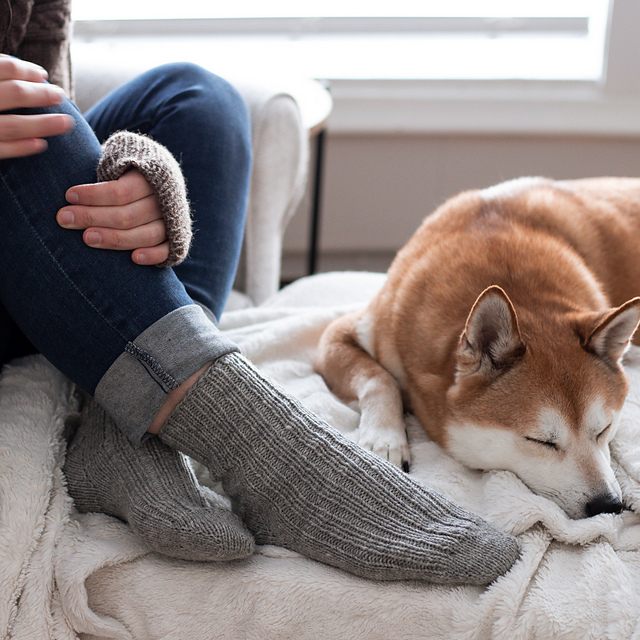
The same way you don’t wash your handknit sweater every time you wear it, don’t wash your handknit socks every time you wear them! This may feel counterintuitive as socks go on your feet and, well, feet don’t always smell like roses. But, remember: wool is antibacterial, so it inhibits the proliferation of bacteria-causing odors.
You can wear wool socks at least twice before having to wash them, unless you wore your handknit socks on a long hike or strenuous excursion and feel they received the brunt of a hard, sweaty day. Socks worn around the house, or to bed, or for a quick jaunt are likely wearable again without a wash.
Pro Tip: Worn socks may just need an airing out! Lay or hang your socks outside in the sun after wearing to let them breathe.
5. Careful Where You Step
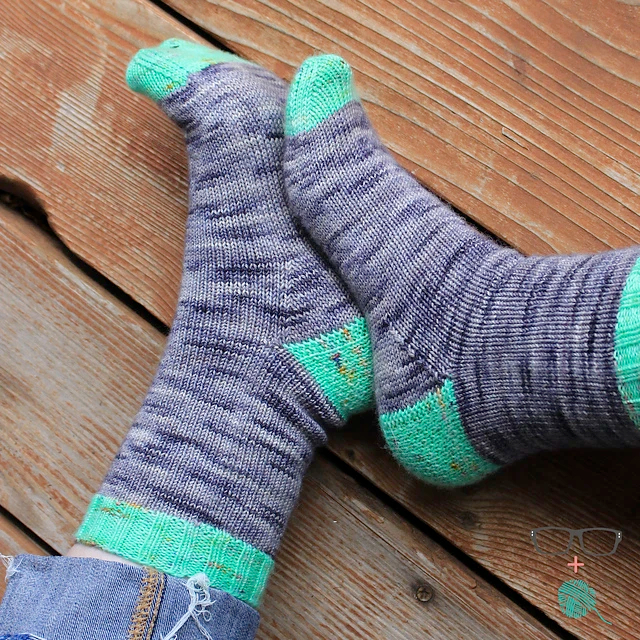
Rough surfaces can be rough on your handknit socks. As mentioned above, socks are high-wear garments. You put on your handknit socks and each step you take puts force and agitation on the bottom of your socks. When holes do occur, they usually happen on the foot pad, around the toes, and on the heels and sole.
Avoid wearing your handknit socks on unfinished hardwood floors, or outdoors. Handknits can quickly snag on nails and rough wood, leading to holes in your knitting.
6. Check Soles Often
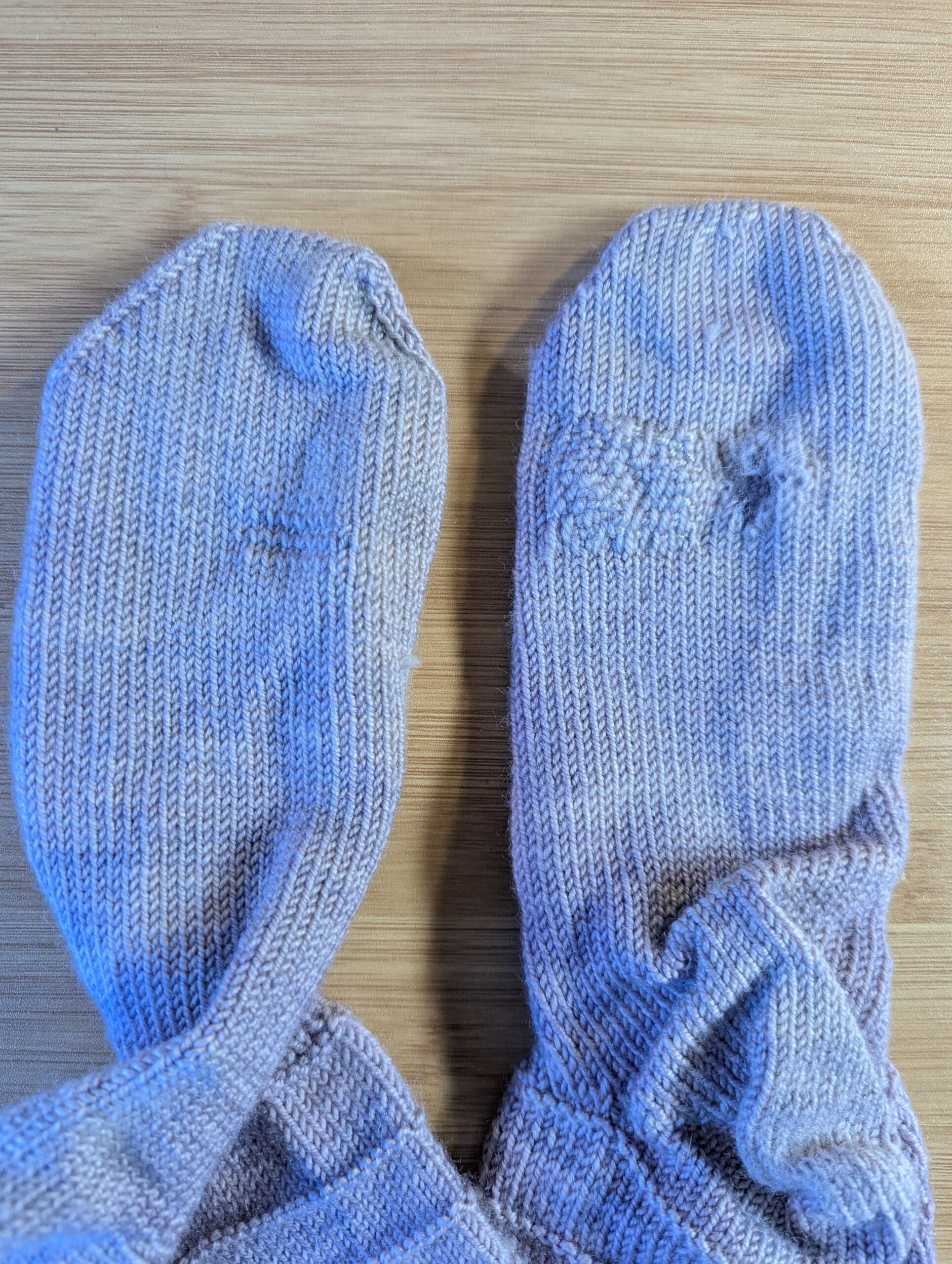
The socks shown above were a lesson that inspired many of the tips on this list. Despite being made with a superwash wool that wont’ be named and shamed (suffice it to say, it’s not a Brown Sheep yarn), they did not fare well in the washing machine and lots of wearing on hardwood floors produced holes. And, as you can see, the holes have happened repeatedly over time. Both socks were previously mended, and now the sock on the right requires additional extensive mending.
It’s important to check the soles of your socks each time after you wear them. You’re more likely to catch holes as they begin to form, and spot areas where the yarn has grown weak. It is much easier to reinforce a weakened area by tracing the path of your knitting with yarn than it is to mend a hole in the knitting. I wish I had spotted the hole forming on the right before it became a large, frayed, and messy hole. But, since I’ve caught it, it inspired me to check the rest of the sock. Behold, the heels:
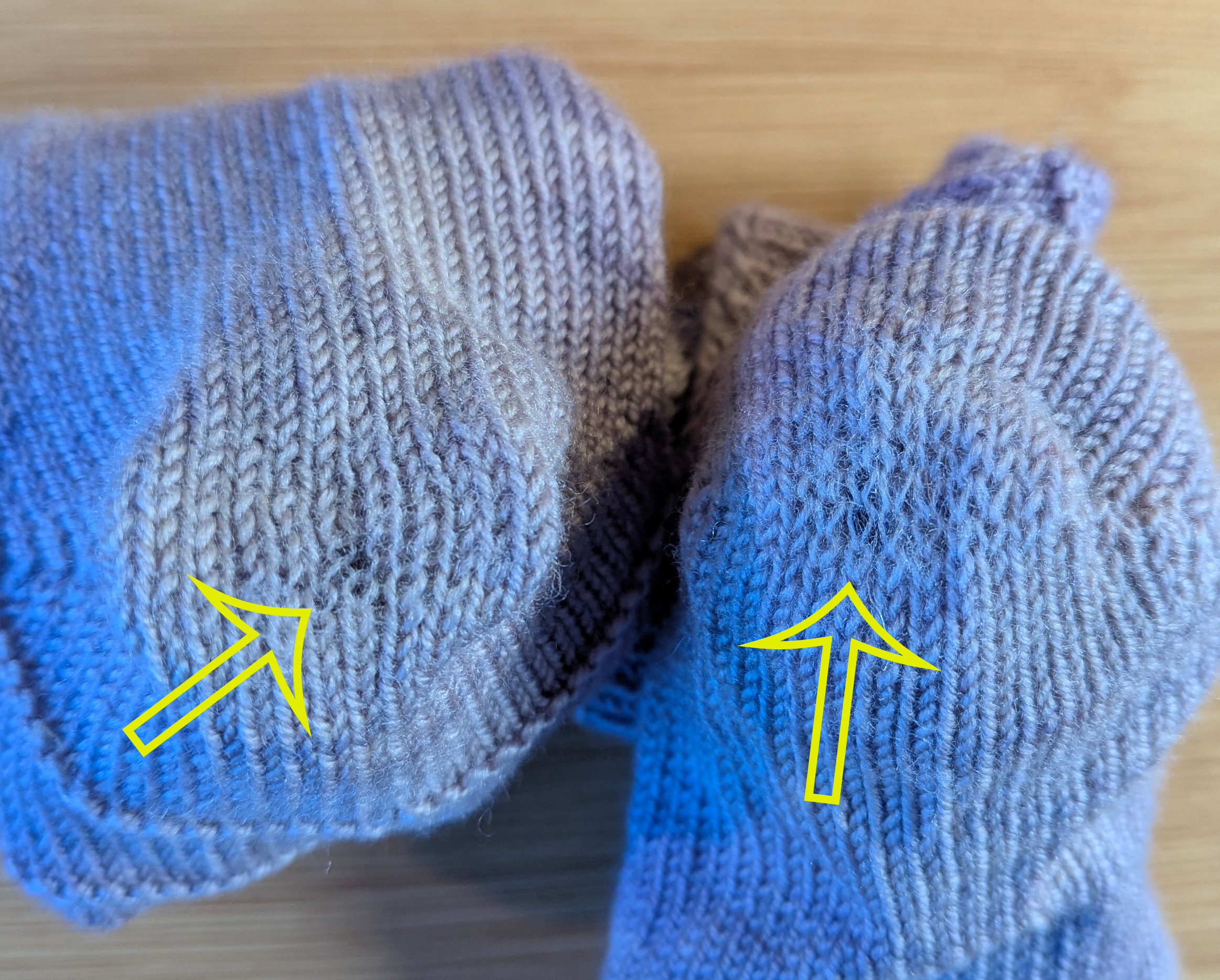
Behole-d, indeed! The arrows indicate areas where the yarn has grown thin. I need to thread a tapestry needle with yarn and draw a path through the stitches to reinforce them. This is why it’s important to check your handknit socks often!
7. Wash Before Storing
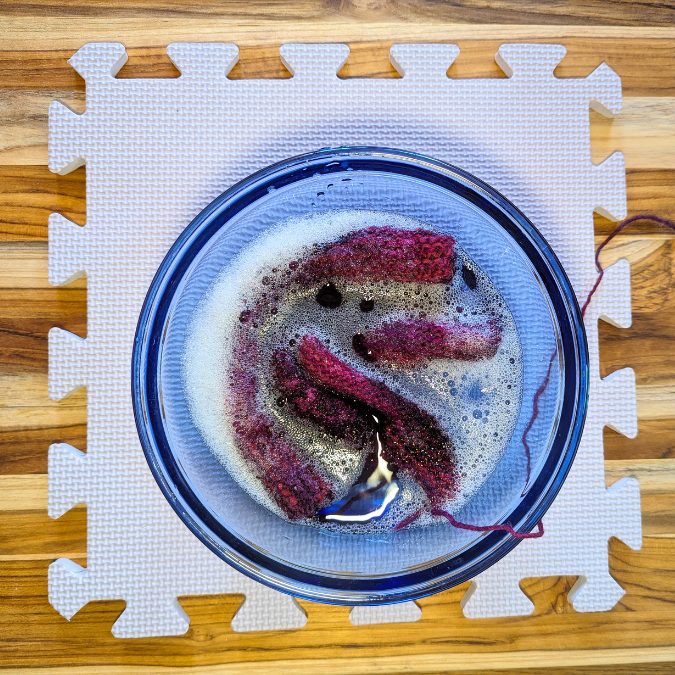
Many knitters don’t wear their handknit socks in late spring and throughout the summer. Wool may be temperate regulating, but for many people, it’s just too warm for woolly socks. If you plan to put your handknit socks into storage for one or more seasons, be sure to wash everything first. Fiber-loving insects are drawn to and like to lay their eggs in unclean wool—it gives their young something to munch on once they hatch—so it’s always best to wash all handknits before you put them away.
8. Fold to Maintain Elasticity
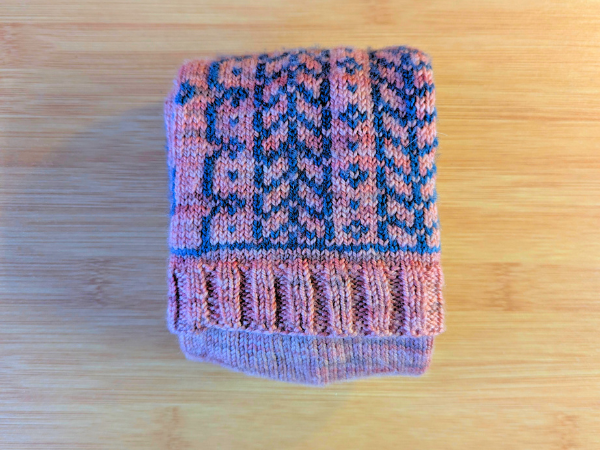
You may fold your machine-made socks into that classic bundle where the elastic of the cuff maintains and holds the sock for storage. Something like this:

This can wreak havoc on the elasticity of your sock cuff. An easy way to fold socks to maintain the elasticity of the cuffs is a very simple square fold, as seen below. Simply stack your socks with the toes folded flat, fold the top sock onto itself in a square, then fold the sock it is lying on in the same way, tuck the toe of the sock on top into its cuff, like so:
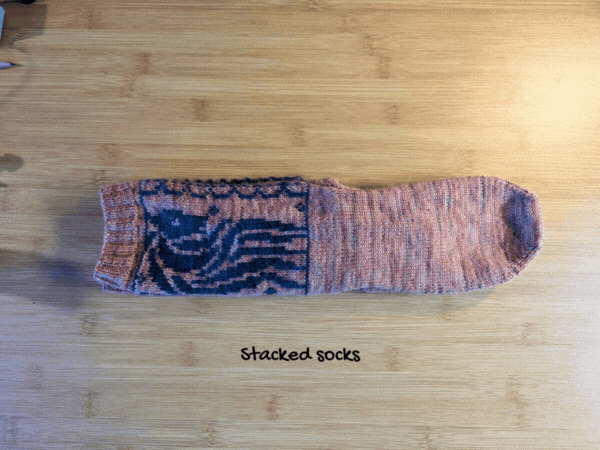
This will maintain your cuff elasticity and it’s also just a very pretty and neat way to store your socks!
9. Store with Insect Repellants
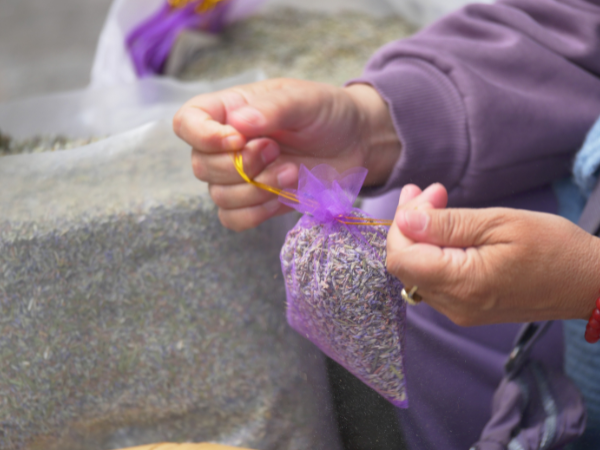
In addition to washing before storage, you can give your handknit socks some extra protection against munchy insects by storing them with dried herbs that act as natural insect repellants. Create sachets with lavendar or rosemary, or invest in cedar blocks, and store them with your socks. Not only will it scent your drawers and make everything smell great, but it will also ward off moths and carpet beetles.
Did we cover all of your favorite handknit sock care tips? What is your favorite way to care for your handknit socks? Let us know in the comments and in the Brown Sheep Company Crafters group (where you can also share your sock knitting photos!).


